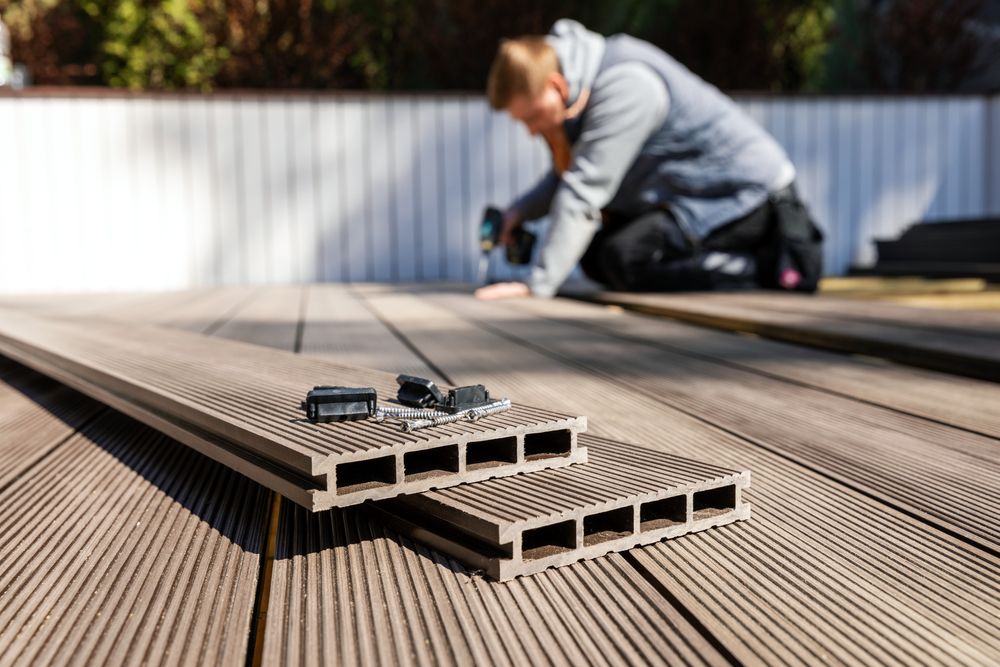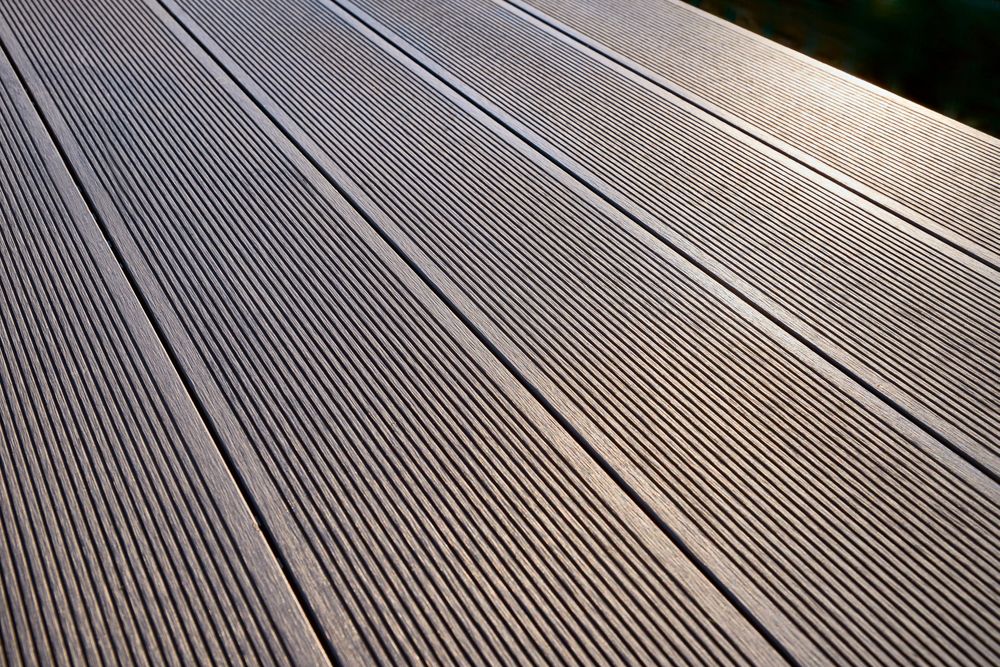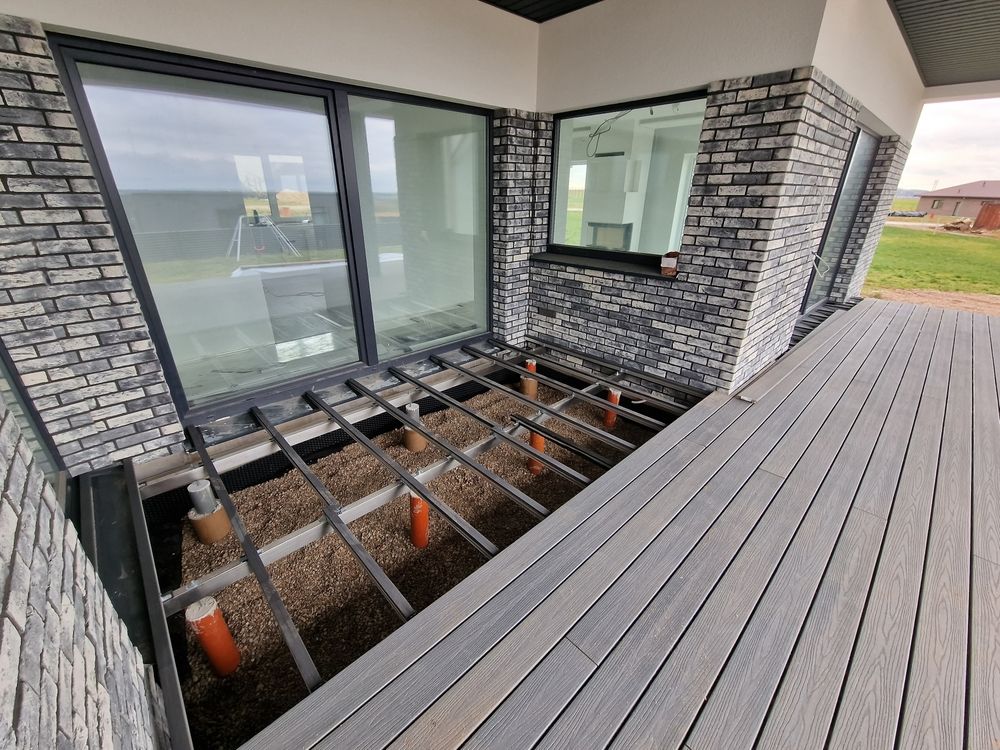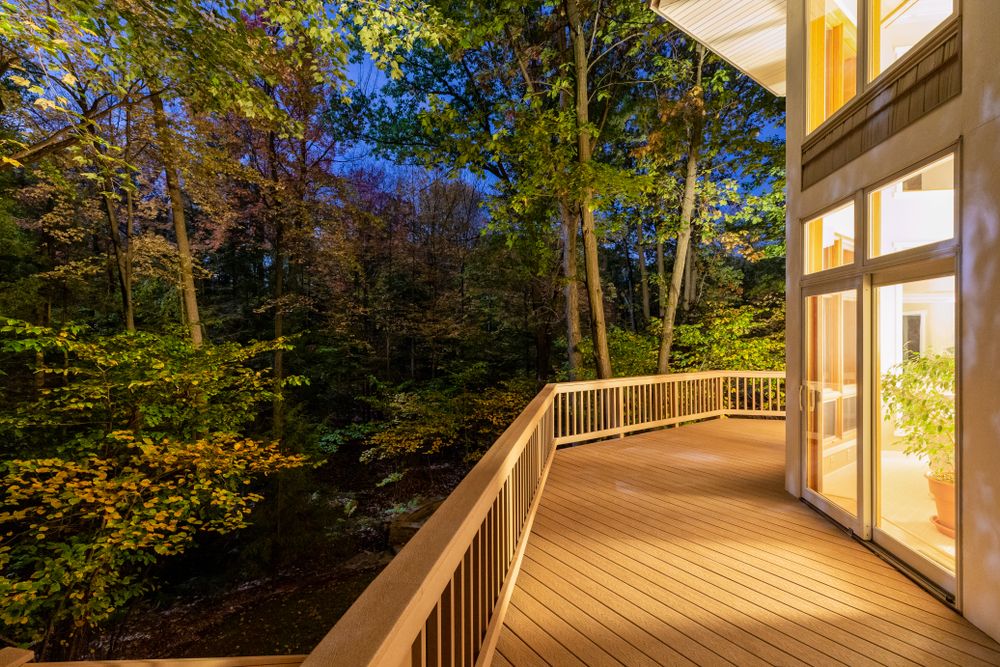
Your Guide to Composite Deck
Published: 16/11/2023 | Updated: 08/12/2023


Composite decking doesn't have a very long history. Its usage instead of wood decking only started in the 90s. Up until that point, natural wood was the go-to.
However, once the concept was introduced to the public, new composites and product lines started to emerge one after the other.
But it has been steadily rising in popularity ever since and lately had a complete surge. You might ask, why?
And we have all the answers! Starting with what exactly is a composite deck and how it differs from old-fashioned wood deck boards, what are its advantages (and disadvantages), and where to start with it.
What is Composite Decking?
Composite decking, also known as composite lumber, is decking material made primarily of a mixture of wood fiber, plastic polymers, and a binding agent.
Rather than pure and real wood deck boards for outdoor space usage and construction, composite deck boards are getting highly favored.
Here are the reasons why consumers use composite decking boards and generally composite deck materials more and more.
It's Durable
The point of composite deck construction was that the benefits, workability, and feel of real wood decking would be highlighted while removing the nuisances that came with it.
With traditional lumber, water damage is one of the biggest problems. Which, alongside other resistance problems, led to a low lifespan with a lot of maintenance.
Composite deck boards are designed specifically to resist water and damage way more than natural wood.
That leads to more durability (up to twice the lifespan of traditional deck boards), less maintenance, and more resistance to the weather.
It's Low Maintenance
We mentioned that composite decking requires low maintenance and minimal maintenance compared to natural wood deck boards.
In practical terms that means, that while traditional deck boards require consistent cleaning, staining, sealing, and painting, composite deck boards, it's low maintenance as it's only supposed to be cleaned every once in a while with soapy water to get rid of everyday dirt.
Most composite decking manufacturers offer long-term warranties that cover fade and stain resistance, as well as structural integrity.
But the way composite decks are designed in the first place is to make them resistant to all those elements that would affect pure natural wood fibers.
It's Less vulnerable to Pest Damage
One of the most important elements that composite decking boards are made to fight is pest damage.
Wood decking is usually most affected by insects, which could cut its lifespan. Composite decking products, on the other hand, are made to rebel and resist insects.
It's More Sustainable
As mentioned in the previous points, composite decking is made to endure and last longer. But that's not the only reason composite wood is considered more eco-friendly.
While the topic is complex and has various facades (more on that later), composite lumber is made with recycled materials.
The recycled materials include recycled plastics as well as recycled wood dust. So it's considered more environmentally friendly with a focus on efficient uses of resources and lessening the carbon footprint.
It's Easy to Install
Composite deck boards are designed to be lighter and easier to handle and install than traditional decking materials.
With clear installation guides, it should be perfectly easy and manageable to install the composite boards at home without professional hire if that's what you'd want.
And aside from that, it took less time to install. The hidden fastening system, especially, makes the installation process more seamless.
Although hidden fasteners cost more, a lot of consumers decide on hidden fasteners rather than standard fasteners (which are driving nails down each board's face) as it makes the process better and gives an overall smoother feel.
Variety of Choices
While the basic formula of composite decking material is wood fibers and synthetic material, there can be enough variety in the rations and types of wood fiber as well as plastic.
That results in many different product lines that each has its own identity and style. And while any product line is likely to have the same quality (within the same price range), you'd have a bigger variety to choose from based on your personal preferences.
It's More Aesthetically Compelling
Variety of choice most prominently means a variety of decking colors. Deck surface patterns and colors differ from one composite deck to the other, which allows you to focus on aesthetics.
You can choose the composite boards that would suit your landscape best and enhance the overall aesthetics and style of your outdoor space.
No Splinters
One of the best benefits of composite deck boards is that they have much more scratch resistance and barely produce any splinters at all. Unlike wood.
That means both a nicer, smoother look but also safer deck boards to walk on barefoot as well as letting any pets or children safely play with no worries.

What Are the Cons of Composite Decking?
While there are tons of benefits to composite decking, it's not without any disadvantages.
There is a Big Price Gap
The big price difference between traditional decking materials and composite decking is one of the biggest differences. The best composite decking out there is going to cost much more than any traditional deck board.
Is composite decking worth the money? because of its durability and low maintenance, many homeowners still decide that composite materials and deck boards are worth it.
Eco-Controversial
We mentioned that we would come back to this. It's a complex topic with many sides. One point of view is that plastic doesn't dissolve in an economically healthy way and the use of plastic is then not at all eco-friendly.
Especially since not all composite decking materials out there are made with recycled plastics.
It goes back to your personal view and what you essentially consider the lesser evil.

Composite Decking Types
There are three main types of composite decking.
While each product line can do things a little bit differently with different ratios of wood, plastic, and other materials, all composite deck products ultimately fall under those three categories.
Solid Composite Decking
Solid composite decking uses the most solid, hard, and best materials as they are usually used for pathways and swimming pools.
They are much more endurable, but on the other hand, they are much heavier and harder to handle.
Blank Composite Decking
Blank composite deck boards are usually the composite boards used for siding and installing essentials, like cables.
They are very lightweight and easy to handle, but not as hardy.
Capped Composite Decking
Capped composite deck boards are mainly what we're talking about in this article. They are the ones made essentially for patios and outdoor areas.
It uses a thin veneer that protects the composite deck from wearing out, fading, and scratching.
This type of composite deck emulates the look of real wood. It's more costly but is considered the best composite decking for outside use.
Decking materials are getting better by the day, and composite deck boards also rise in popularity. For good reasons! If you're still deciding, you should consider composite deck boards and materials.
And making that decision requires thinking of your outdoor space as a whole and what you'd like to set up. Decks aren't just deck boards! There's deck lighting, furniture, and overall style to consider.
At Shrubhub, our professional team of designers knows that all so well. And they also know how worrisome it is to install a design without knowing exactly what it'd look like in real life. Which is the reason behind our 3D designs!
We're currently having a 70% offer on all our design services, so don't miss the chance and sign up here!



